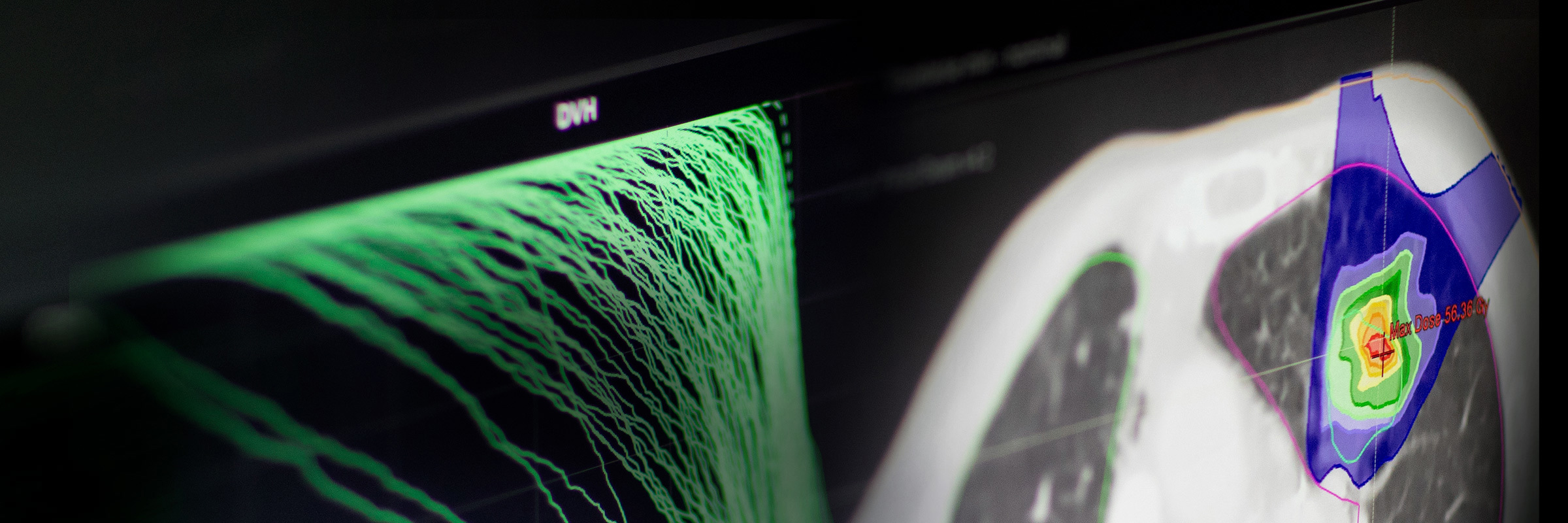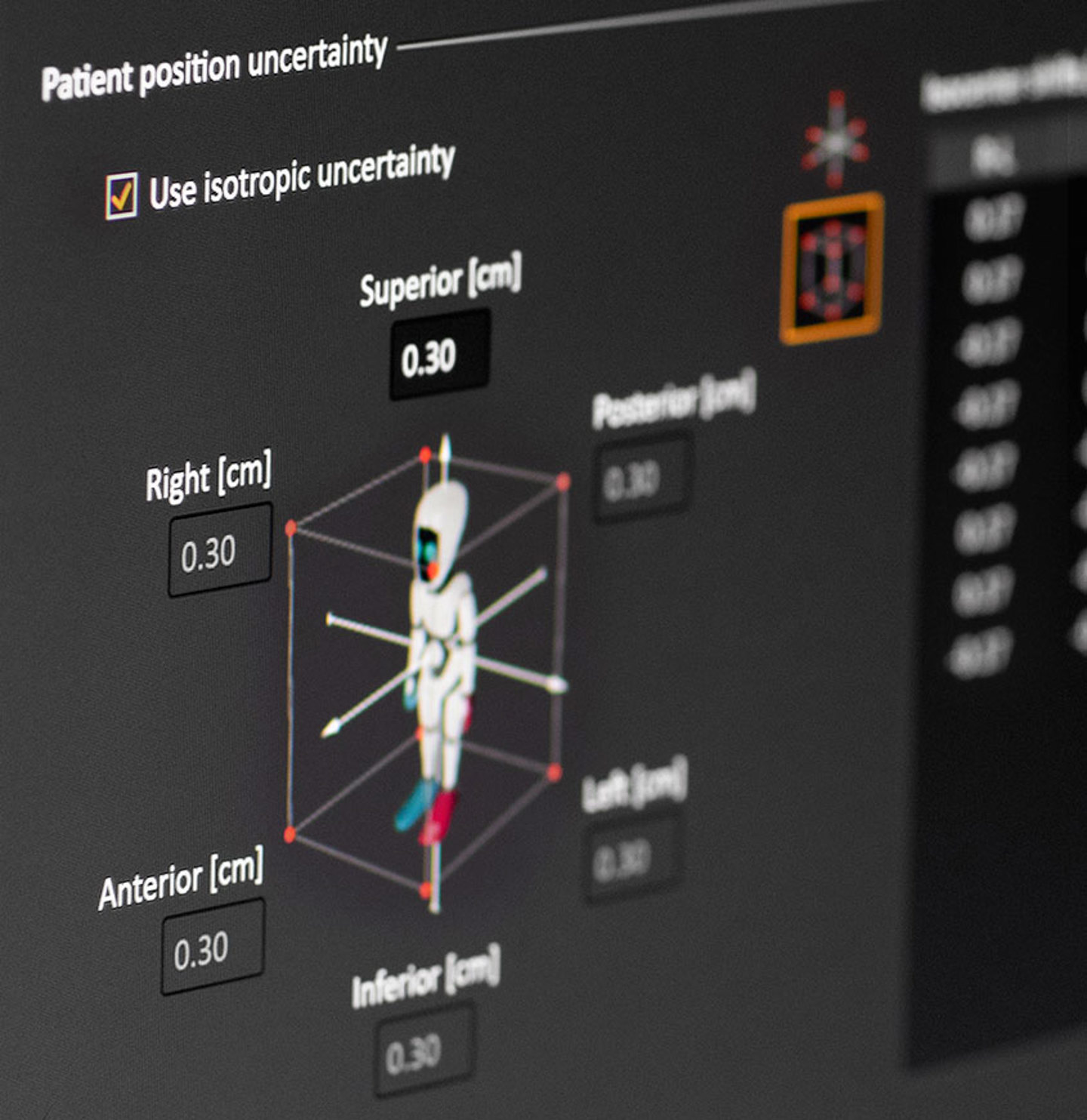The quality of a radiation treatment plan strongly depends on the ability to deal with setup uncertainties and density interpretation errors, as well as from changes in patient anatomy. In cases of heterogeneous density, and especially in particle planning, conventional PTV planning often fail to provide the intended robustness against uncertainties. The emerging way to deal with these uncertainties is to include them in the optimization itself, also known as robust optimization. Regardless of how the plan is created, it is essential to evaluate the robustness of the plan prior to delivery. For this purpose, RayStation provides tools for comprehensive robustness evaluation over multiple error scenarios.
Robustness in
Treatment Planning

Webinar on robustness
In the first part of the webinar, Erik Engwall, Chief Physicist at RaySearch, presents the robustness tools available in RayStation. In the second part, Erik Korevaar, Medical Physicist at UMCG, shows how robust optimization is used in a clinical setting and discuss appropriate metrics for robustness evaluation based on previous clinical experience.
Robust optimization
RaySearch pioneered robust optimization by introducing it in the clinical version of RayStation already in 2014. Since then, robust optimization has become a standard tool in ion therapy and gains momentum also in photon planning. RayStation utilizes a unique robust optimization method that takes the effects of potential changes into account and makes your plan robust to geometrical and dosimetric uncertainties.
It is possible to simulate setup and density errors, as well as organ motion through the use of multiple images. The setup uncertainty can be considered to be the same for all beams, which is the standard option to replace the use of margins in planning. Optionally, the setup errors may be defined independently for each beam, or unique isocenter. This technique isuseful e.g. for creating robust junctions when field matching is required.
The inclusion of 4D-CT images in the robust optimization process addresses situations where there is significant intrafractional motion of internal organs, for example in the thorax during free breathing or partially gated treatments. Setup and density uncertainties may be combined with the 4D image data in the optimization. The 4D data may originate from the CT itself (4D-CT), or by simulating the organ motion in the Deformable Registration module of RayStation. Another use case for the 4D robust optimization in RayStation is to assign different material overrides to the same ROI on identical copies of the planning CT. By employing this technique plans may be created that are robust against e.g. random air bubbles in the Bowel of Pelvic patients.

Robust Optimization White Paper
Please fill in your information and the document will be sent to you.
Your data is handled with discretion, read our privacy statement
Robust evaluation
For evaluation of robustness of your resulting treatment plans, the dedicated robust evaluation module, provides versatile tools to compute and assess multiple error scenarios based on uncertainties in patient setup and density interpretation of CT. Groups of scenarios with different uncertainty settings can easily be defined. You can evaluate the scenarios simultaneously through DVH clusters and robustness clinical goals, as well as through aggregate dose measures in the patient views. This allows you to quickly get a notion of the robustness of the plan. For a more detailed analysis, individual scenario doses can easily be displayed.
Key Features
- Evaluate all scenario DVHs simultaneously
- Evaluate clinical goals over all scenarios
- View single scenario doses, as well as aggregated dose measures over all scenarios, e.g. voxel-wise minimum or maximum, in the 2D patient views

Robustness evaluation of interplay effects
Webinar by Erik Engwall, Head of Physics at RaySearch showing how even the most complex uncertainties in treatment planning can be evaluated in RayStation. In that case Erik will evaluate interplay effects in the robust evaluation module.
Evaluation of Robustness in RayStation
Fill in your information and the document will be sent to you.
Your data is handled with discretion, read our privacy statement

